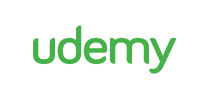65 - Current Issues of Web Security
66 - Principles of Testing
67 - Types of Security Testing
68 - Guidelines for Application Security
69 - Laws and Ethic
70 - Installing Vulnerable Virtual Machine BeeBox
71 - Connectivity and Snapshots
72 - Modern Web Applications
73 - ClientServer Architecture
74 - Running a Web Application
75 - Core Technologies Web Browsers
76 - Core Technologies URL
77 - Core Technologies HTML
78 - Core Technologies CSS
79 - Core Technologies DOM
80 - Core Technologies JavaScript
81 - Core Technologies HTTP
82 - Core Technologies HTTPS and Digital Certificates
83 - Core Technologies Session State and Cookies
84 - Attack Surfaces
85 - Introduction to Burp Downloading Installing and Running
86 - Introduction to Burp Capturing HTTP Traffic and Setting FoxyProxy
87 - Introduction to Burp Capturing HTTPS Traffic
88 - Intro to Reconnaissance
89 - Extract Domain Registration Information Whois
90 - Identifying Hosts or Subdomains Using DNS Fierce Theharvester
91 - Detect Applications on The Same Service
92 - Ports and Services on The Web Server
93 - Review TechnologyArchitecture Information
94 - Extracting Directory Structure Crawling
95 - Minimum Information Principle
96 - Using Search Engines Google Hacking
97 - Definition
98 - Creating a Password List Crunch
99 - Differece Between HTTP and HTTPS Traffic Wireshark
100 - Attacking Insecure Login Mechanisms
101 - Attacking Insecure Logout Mechanisms
102 - Attacking Improper Password Recovery Mechanisms
103 - Attacking Insecure CAPTCHA Implementations
104 - Path Traversal Directory
105 - Path Traversal File
106 - Introduction to File Inclusion Vulnerabilities
107 - Local File Inclusion Vulnerabilities
108 - Remote File Inclusion Vulnerabilities
109 - Http Only Cookies
110 - Secure Cookies
111 - Session ID Related Issues
112 - Session Fixation
113 - Introduction CrossSite Request Forgery
114 - Stealing and Bypassing AntiCSRF Tokens
115 - Definition
116 - Reflected CrossSite Scripting Attacks
117 - Reflected CrossSite Scripting over JSON
118 - Stored CrossSite Scripting Attacks
119 - DOM Based CrossSite Scripting Attacks
120 - Inband SQL Injection over a Search Form
121 - Inband SQL Injection over a Select Form
122 - ErrorBased SQL Injection over a Login Form
123 - SQL Injection over Insert Statement
124 - Boolean Based Blind SQL Injection
125 - Time Based Blind SQL Injection
126 - Detecting and Exploiting SQL Injection with SQLmap
127 - Detecting and Exploiting Error Based SQL Injection with SQLmap
128 - Detecting and Exploiting Boolean and Time Based Blind SQL Injection with SQLmap
129 - Command Injection Introduction
130 - Automate Command Injection Attacks Commix
131 - XMLXPATH Injection
132 - SMTP Mail Header Injection
133 - PHP Code Injection
134 - Heartbleed Attack
135 - Attacking HTML5 Insecure Local Storage
136 - Druppal SQL Injection Drupageddon CVE20143704
137 - SQLite Manager File Inclusion CVE20071232
138 - SQLite Manager PHP Remote Code Injection
139 - SQLite Manager XSS CVE20125105
140 - Bypassing Cross Origin Resource Sharing
141 - XML External Entity Attack
142 - Attacking Unrestricted File Upload Mechanisms
143 - ServerSide Request Forgery











